Do You Need the Battery if the RV is Plugged In? (Will it Still Work?)
NOTE*** The content on this page may contain affiliate links, we may make a commission. And, as an Amazon Associate, we earn from qualifying purchases. More information: disclosure page.
As an RVer – especially if you’re new to the lifestyle – you may be wondering if you still need a battery for your camper if it’s plugged in to shore power. You might be having a problem with your RV battery or just don’t want to replace it – after all, this is expensive and can be a hassle.
Do I need a battery if my RV is plugged in to shore power?
As a general rule, if you are connected to an external power source, it is not necessary to have a battery. This is true as long as the converter is connected and working correctly. However, you will be without a backup power supply in case of a power outage.
To put it simply, if you have shore power, you won’t need to use your battery power. The modern smart systems on your rig will switch the AC power to still operate the DC systems.
If that last sentence sounded like a foreign language to you, you may want to learn a bit more about RV electrical systems. We’ll explain these in detail below.
Here are some other resources under our electric and battery series for your RV:
- RV Electric Setup Basics (RV Plugs and Voltages)
- Running an RV Furnace (Battery, Generator, 110)
- Do RV Outlets Work on Battery?
Do I Need a Battery if My RV is Plugged In?
If your RV is plugged in to an external power source, such as shore power at a campground, you do not need to have a battery for the rig. As long as you have a converter, you will be able to operate the electrical systems in your RV that rely on DC power.
Keep in mind, though, that if there’s a power outage and you do not have a battery, you may be without power until the problem has been fixed.
In order to fully understand the importance of power sources, let’s start by discussing the various electrical systems in an RV or camper and how they work.
Electrical Systems in an RV and How They Work
Your camping rig consists of three separate electrical systems: a chassis system, AC power, and DC power. Here’s a breakdown of the electrical systems in an RV to understand the topic better:
Chassis Electrical System
All drivable RVs (and tow vehicles for travel trailers) will have a chassis system. This vital electrical system is what starts your rig’s engine and powers the systems that you need to run and drive the RV or tow vehicle.
The chassis is critical for getting your RV where you need to go, but once you get there, it’s purpose has been served.
This is when the AC and DC power sources come into play.
AC Shore Power Source

Image source: welcomia via Canva.com
The AC – or alternating current – system is similar to the electricity flowing through the wires and outlets in a traditional home. The AC system generates more power than the DC system and is necessary for the microwave, roof air conditioner, 120-volt outlets, and refrigerator. To use AC power in your RV, you’ll need to plug into “shore power”.
Shore power is an external source where you can connect to your RV in order to bring AC current inside for the use of your appliances.
Most campgrounds will provide a 120-volt AC electric source or shore power that you can plug your RV into.
The power receptacle will have a 30 amp and 50 amp plug (sometimes a 15 amp) to connect your power cord. (Note: The power needs of your RV will determine whether you need 30 amps or 50 amps.)
Caution: You can always step down the amps but never connect to more amps than your RV is designed for.
Most RVs come with a long power cord wired to its junction box. This allows you to plug your vehicle into the shore power source.
If your RV cord is too short, or missing altogether, you can have one installed by a specialist or professional in the field. You can also find replacement or extension cords on Amazon.
DC Battery Power
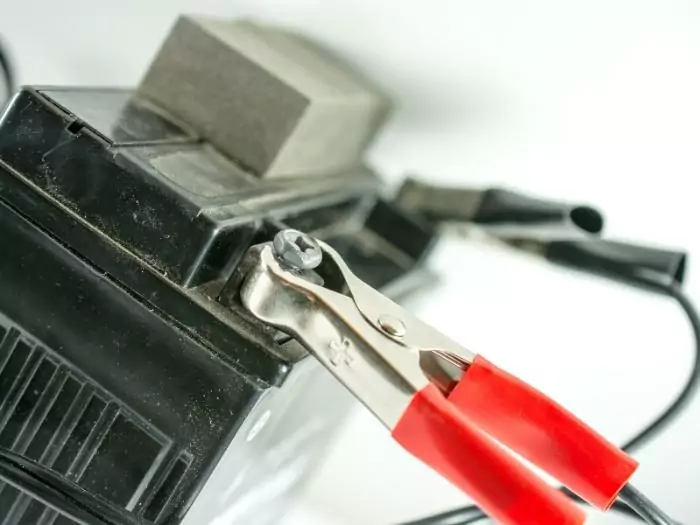
Image source: wwing via Canva.com
Most RVs have at least one deep-cycle battery which provides 12-volts direct current (DC) to the RV. This is a fully separate system that can be used to power the lights, water pump, fans, and radio. The DC system provides less power than the AC system so cannot run larger appliances.
When your RV is hooked up to shore power or hookups, these batteries can be charged and will then store power for later use.
Your battery will generally be able to supply power to your outlets through an inverter. This may seem confusing since the outlet that you charge your phone with actually needs AC power.
If not connected to shore power, you can charge your phone or other devices by plugging them into your RV’s 12v wall outlet, but will need a generator or a DC to AC inverter.
Do I Need a Converter or Inverter For My RV?
A converter is a critical piece of the RV’s two separate electrical systems. You can use a converter to charge your RV’s batteries when plugged into an external power source. Then, using an inverter, you can use this stored power to run appliances that only work on AC power – such as a TV, air conditioner, and wall outlets – when you’re no longer plugged in.
If you are still not clear on this, read our RV electrical system basics here.
When comparing battery capacity to shore power capacity, the battery has a lower capacity to provide electricity to your RV. The batteries will drain over time and not provide consistent power.
You can also connect two or more batteries in parallel, creating a battery bank. This helps you to have a larger supply of power and a longer connectivity time – especially if you won’t be able to charge your battery once it’s drained.
Will an RV Converter Work Without a Battery?
Yes – you can still use your RV power converter even if you don’t have a battery. However, the RV must plugged into an external power source, such as shore power, for the converter to work.
A converter essentially “creates” DC power on-demand, which will run anything on your 12-volt system such as your propane refrigerator and lights. And, as long as you’re still plugged in to shore power, you’ll be able to use your 120-volt AC appliances as well.
Will Your RV Work Without a Battery?

Your RV needs a minimum of one power source in order to function and supply power to your appliances. If you are already connected to a shore power source, you do not need a battery, as long as the converter is working properly.
When connected to shore power, this power will go into your RV’s converter. This transforms 120-volt AC power into 12-volt DC power. Some lights and appliances will only run on DC power – meaning it will require either a battery or the AC power converted to DC.
Connecting an RV to shore power is more convenient than connecting to a battery. You don’t need to worry about your power running out any minute, and you’ll prolong the life of your battery.
However, if there is a power outage (which happens) you will be left without a backup power source. So although you are plugged into shore power, things like your refrigerator will stop working.
What you CAN do and SHOULD do here are different. Yes, your RV or travel trailer will operate when connected to shore power – as long as the power supply is consistent. Power outages are common at campgrounds, though.
Will Camper Lights Work Without a Battery?
Yes, the lights in your camper can still work without a battery in the RV. However, you must have a converter connected to shore power.
Your RV lights operate on the 12-volt DC system. Without a 12-volt battery (DC) hooked up, the system must rely on 120-volt AC or shore power which will have to be converted to the proper voltage.
Can I Run My RV Furnace Without a Battery?
Your camper’s furnace can be run without a battery, but as with the other 12-volt-operated appliances, it will need to be connected to shore power through a converter. Even if your furnace is fueled by propane, you will most likely still need electric to operate the vent fans and ignition switch.
Does the RV Battery Charge When Plugged in?
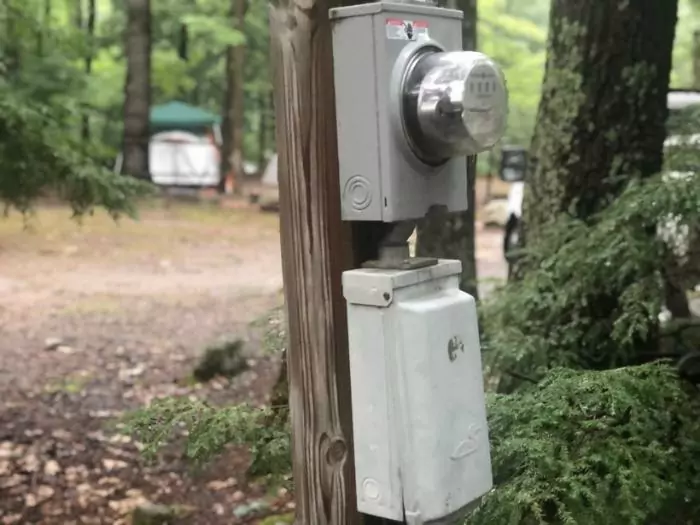
Most modern RVs have a converter that changes the AC 120-volt power to DC. This is used to run the DC system and charge the batteries. However, if the converter is not connected directly to the battery, the battery will not charge when the RV is plugged in.
My travel trailer does not charge the battery when plugged in. The converter was not originally wired correctly, or has been disconnected. The simple solution is to run a small trickle charger from an outlet to the battery.
The battery is on the front of my travel trailer and a storage area sits just behind that. So I have the trickle charger plugged in inside and the wires running through the storage area to the battery.
An even better solution would be to take your RV to an electrician to diagnose the problem. An electrician could make a more permanent fix to charge the battery while plugged in.
Should You Disconnect Your RV Battery When Plugged in?
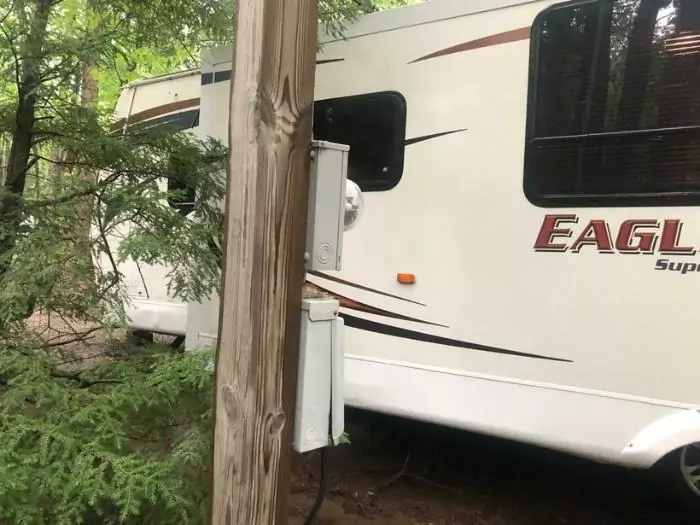
Most newer RVs are equipped with smart systems that will only charge the battery until it is fully charged and maintain that charge. In this case, unless the RV is in storage, your battery should be connected while the RV plugged in. However, if you have an older RV or faulty system the battery could be damaged over time.
With this being said, it is important to remember that batteries differ from each other. Before leaving your battery connected, check if it can withstand being plugged into an external source for a long time or not.
When you are connected to shore power and your battery at the same time for a long period of time, some older batteries may get damaged by being overcharged.
If you have an older battery, it is advisable for you to disconnect it from your RV once it’s fully charged to prevent damage.
Many newer batteries and converters now come equipped with smart technology designed to protect the battery life. These have the ability to automatically stop charging once the battery is fully charged, reducing the chances of overcharging and causing damage. This helps safeguard your batteries even when connected to shore power for long periods.
You can find smart batteries for your RV online at Amazon.
If you don’t have a newer battery, you can purchase a float charger (like this one on Amazon) with a battery maintenance mode. This lets you to leave your battery connected for a longer time, allowing it to receive only the maintenance charge that it needs.
Factors Affecting Your RV’s Battery Life
Although these may vary among different types of batteries, here are the possible factors that may affect your RV battery’s life:
Overcharging – Leaving your RV battery plugged in long after it gets fully charged can deplete the battery cells’ electrolyte levels. This can lead to reduced battery life.
- If you have a lead-acid battery, you can add distilled water – not tap or any other kind of water – whenever your battery’s electrolyte levels get low.
- However, it is important to take note that this will only bring the battery’s electrolyte level back to normal, but not prevent it from reducing its battery life.
Undercharging – Sulfation is a buildup that may happen whenever your batteries are undercharged or not fully charged for a long period of time. This will prevent the chemical-electrical conversion that your battery needs to function, thereby reducing its ability to hold a charge.
- Recharging your battery immediately is the best way to prevent this and, when storing your battery, you should make sure that it’s at least 80% charged, if not 100%.
Parasitic Loads – As the name implies, these are loads connected to your battery that consumes its power (like a parasite), especially when your RV is not in use. This includes small electrical devices, like gas detectors and clocks, which can lower your stored power and reduce battery life.
- You can equip your RV with battery disconnecting switches to turn these small electrical devices off and prevent them from consuming your stored power when not using your RV.
Change in Temperature – Your battery can lose its voltage capacity over time due to exposure to too much heat or too much cold.
- Whether you’re using or storing your RV batteries, make sure that they won’t freeze due to too much cold or be exposed to severe, prolonged heat.
Maintenance of Your Battery
Along with the above factors that may negatively affect your battery, battery maintenance also depends on the type of battery that you have.
For example, lithium batteries require less maintenance than other types.
It is still advisable for you to look up the specifications of your own battery. Generally, though, these are the things that you can do to help maintain your battery’s life:
• Maintain your battery electrolyte levels – Frequent battery charging may cause this to decrease, but you can add distilled water when necessary. There is a level marked for you to see if your battery is low on electrolytes. Also, be sure to not overfill the cells.
• Clean your battery – Cleaning your battery is also important to remove possible buildup of corrosive material on it. It is important to properly clean and rinse it with water and use a brush for scrubbing whenever necessary.
• Check your battery cables – Clean your battery cables and check if there are tears anywhere, as this may cause connection problems or even start a fire.
• Avoid open flames – Remember never to bring your battery near a flame as the battery vapors can ignite.
• Bring your RV for a check-up with a specialist – Having your RV and batteries checked by professionals will always be the best option to maintain and prolong the life of your battery – as well as your RV.
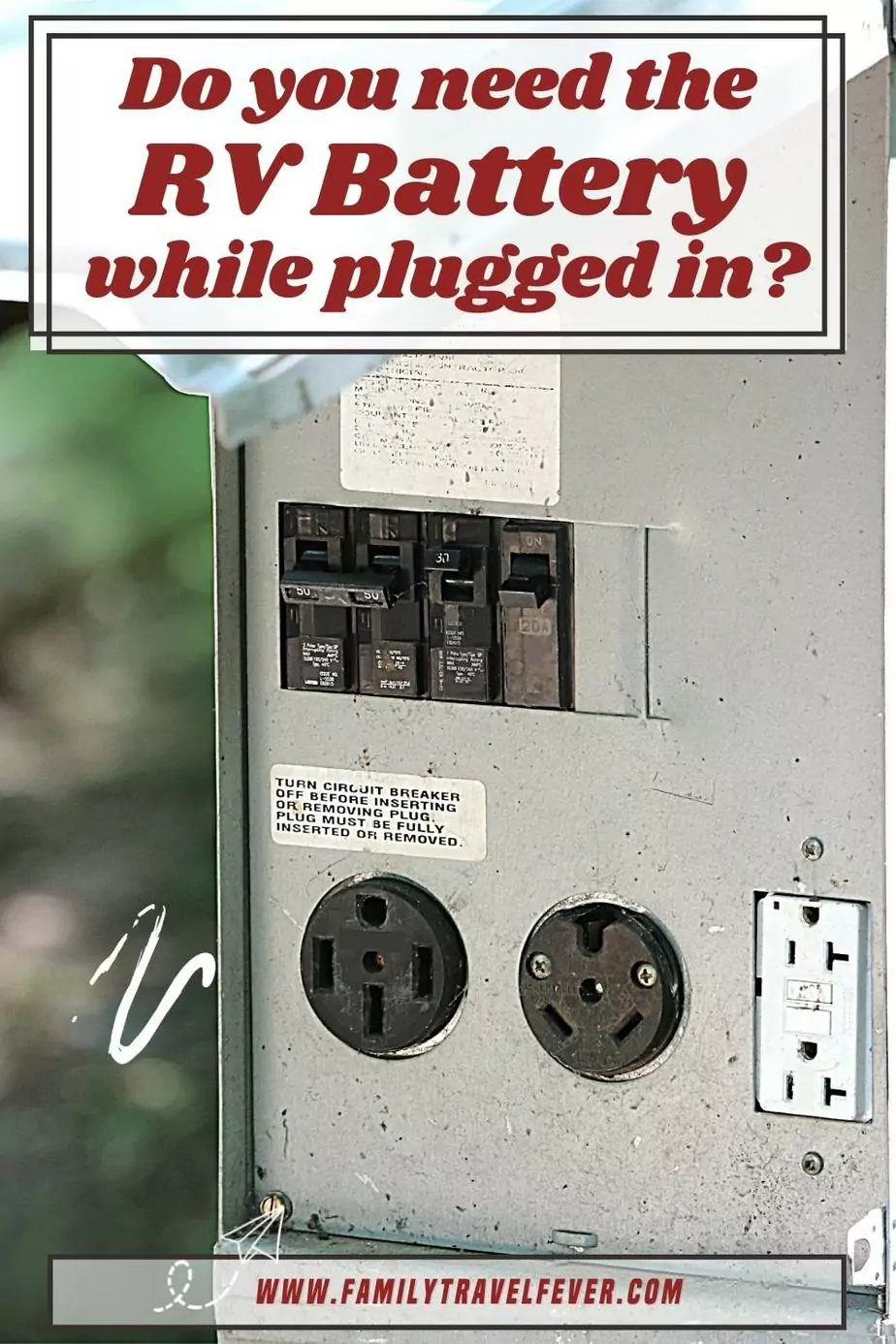
Final Remarks On Whether or Not Your RV Needs a Battery
If you’re still wondering if your RV needs a battery if you’re plugged in to another power source, the simple answer is no.
While you may not need to have a battery connected to your RV when plugged in at a campground, it may be beneficial to do so. This will allow your battery to get charged up and ready for your next trip. It will also come in handy if the campground experiences a power outage.
Keep an eye on your batteries, and avoid under- or overcharging. Having a float charger will help to prevent this.
In addition, perform routine checks and maintenance on all parts of your RV and its electrical systems. If you have trouble keeping track of all the moving parts of your trip, check out my Etsy store for useful checklists and planners.

If you need more resources for your RV, I have compiled tons of useful tips. Here are a few to get you started:
- How Far Can an RV Go on a Tank of Gas
- Can RV AC Run All Day?
- The Best Length for a Travel Trailer (Size Chart Included)
- What Driving License Do I Need to Drive an RV in the USA?

Hi, I’m Shauna – Welcome to Family Travel Fever. We are a large family, that was bitten by the travel bug! I take the kids by myself because I don’t mind flying or driving solo with my crew to discover the coolest places.
Sign up for our email list for my best travel tips plus get the family travel planner free.

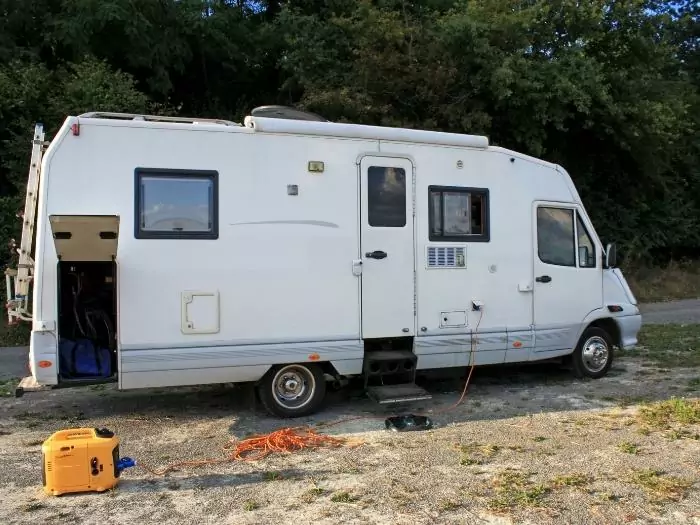
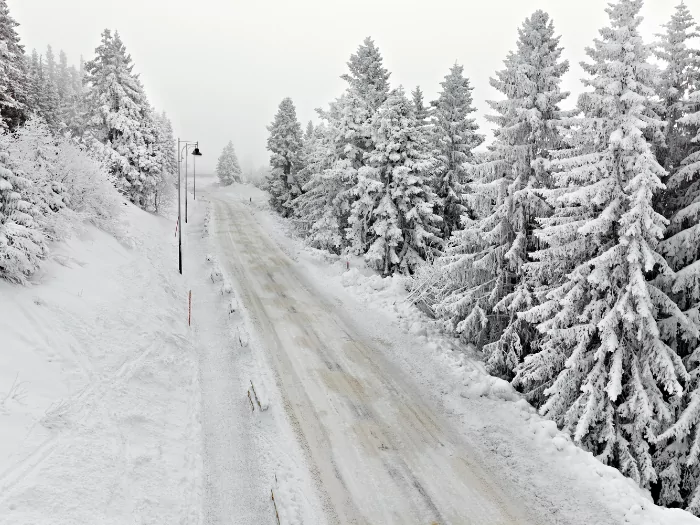


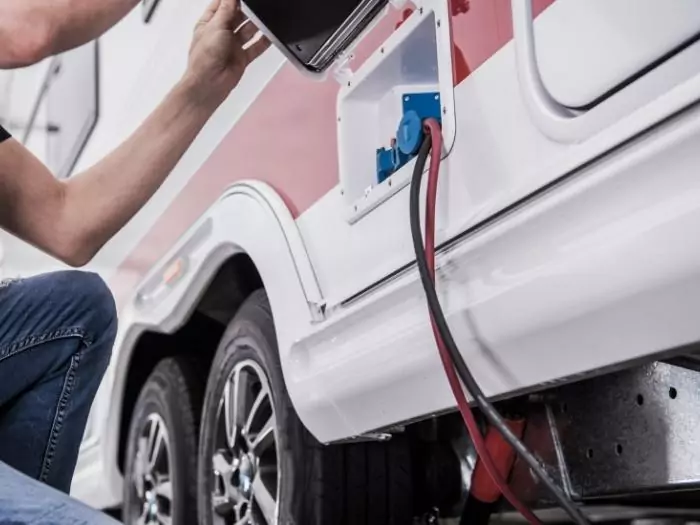
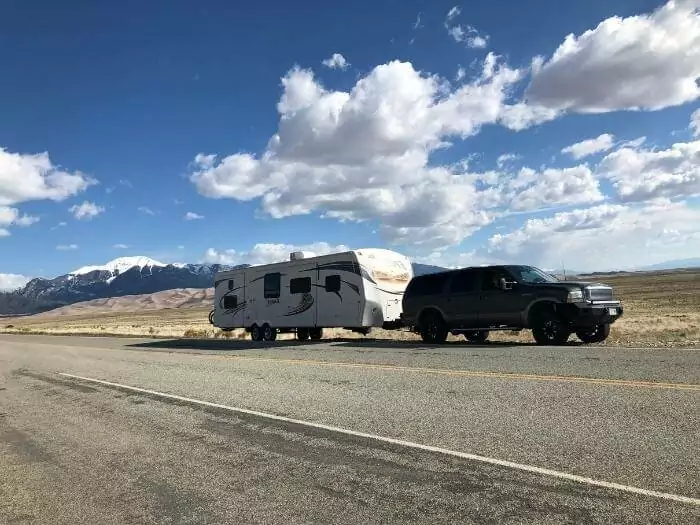
I have a Electrical Service 30 amp VIN 1UJBJ0BN1K17R0369 in my RV that I can’t drive because it’s not driveable ( no motor) I want to live in my RV all year, winter and summer, I want the eletric to work everyday for lights, tv, Refrigerator, everything. Water Heater Type is DSI Gas AC BTU 13500 btu whatever that is but I needed working as well.
Inside you will find modern kitchen appliances including a three burner range with a 9,000 BTU Super Burner and piezo igniter, a Norcold refrigerator, and a microwave oven. Also a13,500-BTU roof-mounted A/C and 20-pound propane bottles (2) … I am new to this and I really don’t have anywhere to plug in … can you hepl me with this or give me advice ….. Thanks John
When you plug in to shore power, your camper batteries will start to charge. When you are plugged in, the converter in your apparatus will convert the AC power from the power pedestal into DC electricity, which will then be used to charge